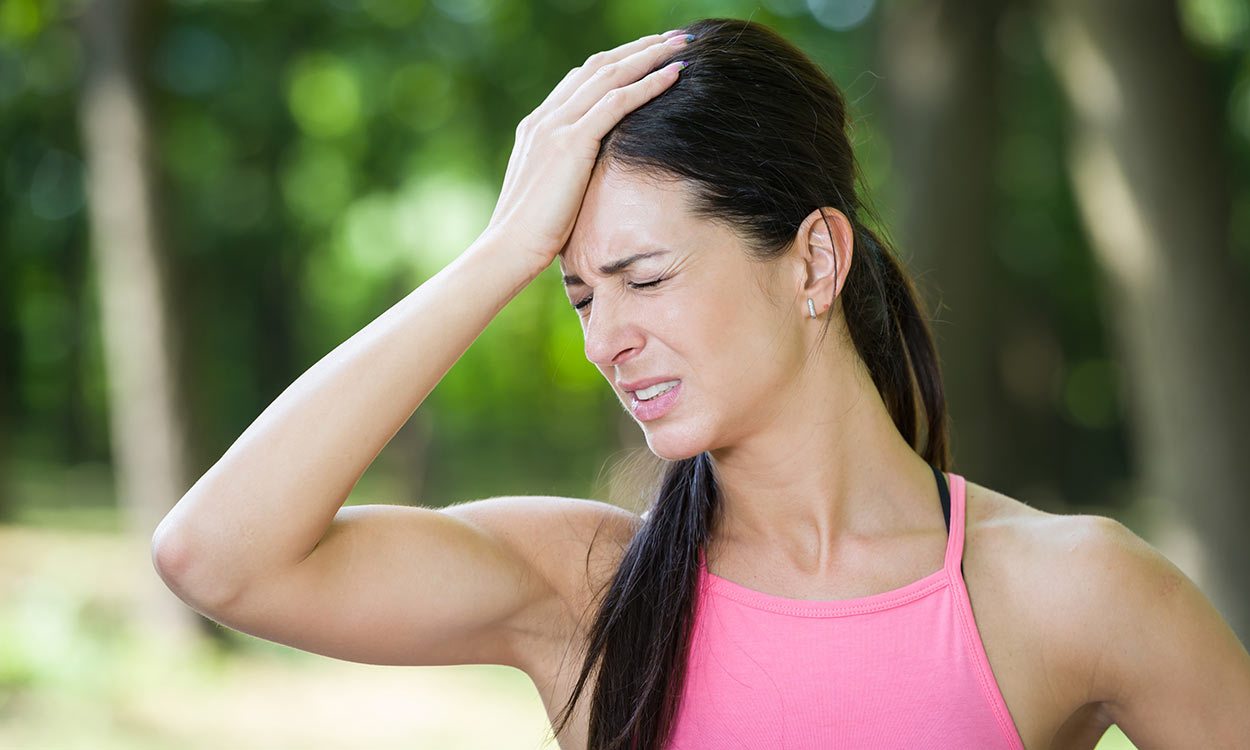Exercise-induced headaches are common among athletes, but what causes them and can they be cured?
Do you find training a headache? Up to 35% of athletes regularly suffer a throbbing head during or after an intense session, research indicates. And four years ago, a study entitled ‘London 2012 – a survey of the impact of headache on UK elite athletes’, published in the Journal of Headache and Pain, found that 57% (17/30) of respondents reported their headaches limited optimal performance in their sport.
“It is well documented that sudden, strenuous exercise can trigger headaches in some people,” says Dr Juliet McGrattan, a GP who specialises in treating sports people. “There’s no single reason why they occur, but they definitely exist.”
Three years ago, the International Headache Society listed “primary exercise headaches” among the main headache triggers, albeit on a list that included sneezing and orgasms.
Who gets them?
In a study published in the British Journal of Sports Medicine, runners reported the highest incidence, followed closely by those who lifted weights in training. But no athlete is immune. Throwers can suffer as a result of the turning motion, according to the literature.
Dr Rashmi Halker, a neurologist at the Mayo Clinic Arizona and the author of a review of studies related to exercise headaches, stresses that exercise headaches can be severe, but are different from migraines.
However, “strenuous workouts may set off migraines in people who are susceptible”, he says, and a study conducted at the Headache Centre of Atlanta reported that hard exercise provokes about 20% of migraines in sufferers.
What causes them?
“Factors such as dehydration, low blood sugar or extreme weather can trigger exercise headaches,” says McGrattan. So can sudden movements and turning motions. However, experts have identified two main types of workout headache suffered by those for whom it is a persistent problem.
Activities that place a lot of strain on the body (such as weightlifting) can affect blood pressure and cerebral blood flow, triggering an “exertional headache”. This causes pulsating pain and can last from five minutes to 48 hours.
With aerobic activity (running, cycling), “effort-induced migraines” are more common. They can be one-sided and often last for a few hours.
What to do
If the headaches are recurrent or debilitating, see your doctor in case they are a symptom of something serious, particularly if you experience neck stiffness or blurred vision.
“The fear is that a blood vessel in the brain may have burst, leading to conditions like sub-arachnoid haemorrhage where blood leaks in to the surface of the brain, so you really do need to get it checked out if you suddenly start getting them,” McGrattan says.
If they are only related to exercise, then you may simply be prescribed painkillers prior to a workout. Halker says primary exercise headaches “develop during or after sustained exertion,” but don’t usually last more than two days (and often much less).
When exercise helps
It’s not all bad news. For some people predisposed to migraines, regular exercise – in particular running – can help to reduce the severity incidence of tension headaches and migraines.
A Swedish study, published in the Journal of Head and Face Pain, tested this theory with a group of 26 migraine sufferers, asking them to perform cycling sessions on stationary bikes at a clinic in Sweden on three days a week for three months.
At the end of the study, they reported a reduction in both the severity and the number of migraines.














